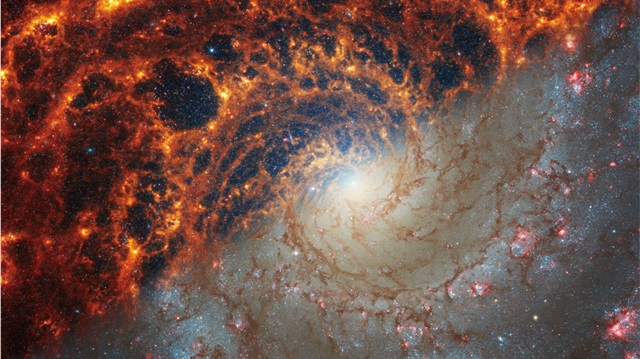
The Galaxies – NASA, ESA, CSA, STScI, Janice Lee (STScI), Thomas Williams (Oxford), and the PHANGS team
NASA’s James Webb Telescope has done it again. It has now provided images of 19 spiraling galaxies near our own.
“It’s oh-so-easy to be absolutely mesmerized by these spiral galaxies,” said NASA.
Their clearly defined arms, which are brimming with stars, can be followed to their centers, where there may be old star clusters and – sometimes – active supermassive black holes. Only NASA’s James Webb Space Telescope, it said, can deliver “highly detailed” scenes of nearby galaxies in a combination of near- and mid-infrared light.
Will you offer us a hand? Every gift, regardless of size, fuels our future.
Your critical contribution enables us to maintain our independence from shareholders or wealthy owners, allowing us to keep up reporting without bias. It means we can continue to make Jewish Business News available to everyone.
You can support us for as little as $1 via PayPal at office@jewishbusinessnews.com.
Thank you.
These Webb images are part of a large, long-standing project, the Physics at High Angular Resolution in Nearby Galaxies (PHANGS) program, which is supported by more than 150 astronomers worldwide. Before Webb took these images, PHANGS was already brimming with data from NASA’s Hubble Space Telescope, the Very Large Telescope’s Multi-Unit Spectroscopic Explorer, and the Atacama Large Millimeter/submillimeter Array, including observations in ultraviolet, visible, and radio light. Webb’s near- and mid-infrared contributions have provided several new puzzle pieces.
“Webb’s new images are extraordinary,” said Janice Lee, a project scientist for strategic initiatives at the Space Telescope Science Institute in Baltimore. “They’re mind-blowing even for researchers who have studied these same galaxies for decades. Bubbles and filaments are resolved down to the smallest scales ever observed, and tell a story about the star formation cycle.”
“I feel like our team lives in a constant state of being overwhelmed – in a positive way – by the amount of detail in these images,” added Thomas Williams, a postdoctoral researcher at the University of Oxford in the United Kingdom.
Evidence shows that galaxies grow from inside out – star formation begins at galaxies’ cores and spreads along their arms, spiraling away from the center, explained NASA. The farther a star is from the galaxy’s core, the more likely it is to be younger. In contrast, the areas near the cores that look lit by a blue spotlight are populations of older stars.
In addition to immediately releasing these images, the PHANGS team has also released the largest catalog to date of roughly 100,000 star clusters. “The amount of analysis that can be done with these images is vastly larger than anything our team could possibly handle,” Rosolowsky emphasized. “We’re excited to support the community so all researchers can contribute.”



